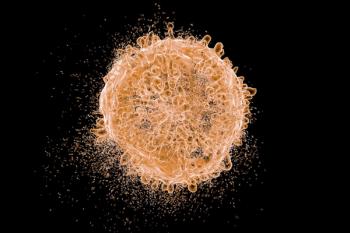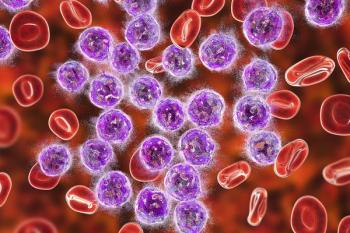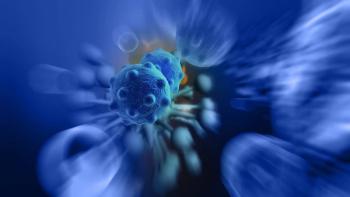
Ponatinib Effective for Front-Line CML, With Substantial Toxicity
Ponatinib yielded complete cytogenetic responses in most patients with newly diagnosed chronic-phase CML, but the risk of vascular events suggests other agents should first be considered.
The tyrosine kinase inhibitor (TKI) ponatinib yielded complete cytogenetic responses in most patients with newly diagnosed chronic-phase chronic myeloid leukemia (CML), according to a phase II study. The risk of vascular events with the drug, however, suggests other agents should be considered first for front-line therapy.
“Up to 25% to 30% of patients are resistant to first-line TKI therapy through various mechanisms,” wrote study authors led by Jorge Cortes, MD, of the MD Anderson Cancer Center in Houston. “Thus, outcomes could be improved by treatments that circumvent or prevent TKI resistance.” Ponatinib is a third-generation TKI with inhibitory activity against kinases beyond just the BCR-ABL1 kinase, but the safety of the drug has been a concern.
The new study was a phase II, single-arm trial that included 51 patients with chronic-phase CML diagnosed less than 6 months prior; the median age was 48 years and 57% of patients were men. The first 43 patients began with 45 mg ponatinib each day, though this was then reduced to 30 mg or 15 mg per day due to tolerability issues and an
There were 46 evaluable patients in total, and 43 of them (94%) achieved a complete cytogenetic response (CCyR) at 6 months. At 12 months, 26 of 27 evaluable patients (96%) had a CCyR; and at 18 months, 20 of 21 patients (95%) achieved a CCyR. Major molecular response was also common, occurring in 83% of patients at 6 months.
The trial was terminated early, in June 2014, after a recommendation from the FDA regarding the risk of thromboembolism with ponatinib. The most frequent adverse event, however, was skin-related toxicity, in 69% of patients. Elevated lipase levels occurred in 63%.
Cardiovascular events-mostly hypertension-occurred in 25 patients (49%). Grade 3/4 myelosuppression occurred in 29%. Three patients had grade 3 vaso-occlusive disease, one had grade 3 acute coronary syndrome, and one had grade 3 myocardial infarction. In total, 85% of patients needed treatment interruption at some point and 88% required a dose reduction.
The authors speculated that ponatinib’s effects on multiple targets may promote endothelial dysfunction and possible predispose patient to thromboembolic events. The presence of these toxicities at lower rates with other drugs, however, calls this idea into question.
“At the doses currently used in other settings, the safety profile might not be appropriate for treatment of this patient population who have other treatment options with high efficacy,” they concluded, adding that additional studies are still needed to test whether lower starting doses, aggressive management of hypertension, or other interventions could make ponatinib more useful. “For now, ponatinib should be used only for patients who have failed other therapies.”
Newsletter
Stay up to date on recent advances in the multidisciplinary approach to cancer.





